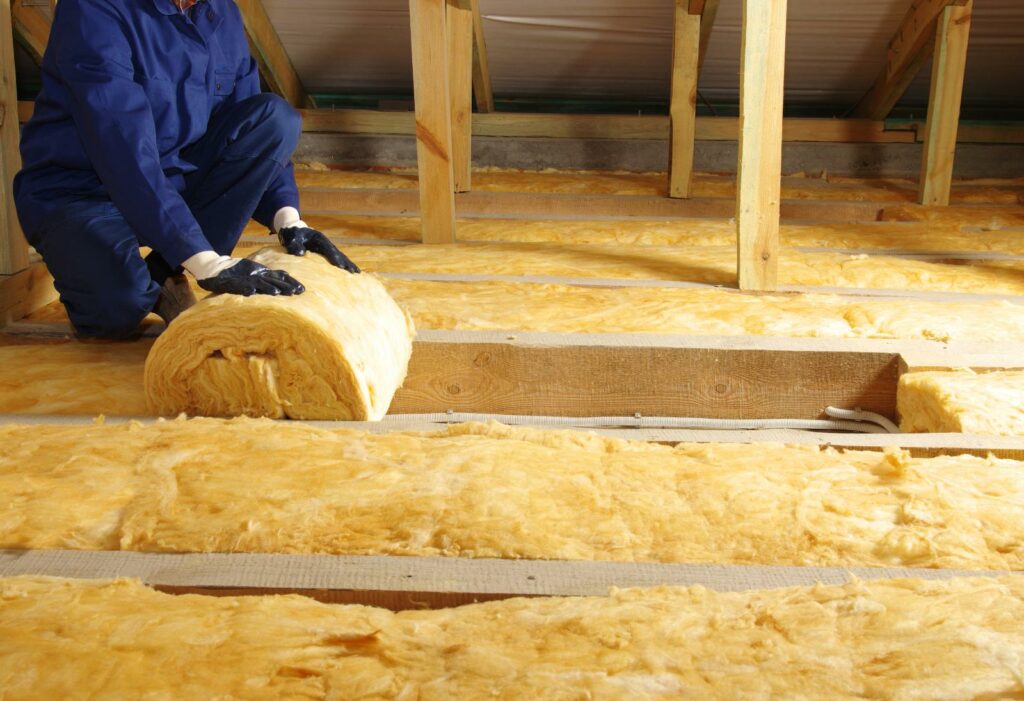
Contents
If you’re looking to make your home more environmentally friendly, blown-in insulation could be the answer you’ve been searching for. Not only does it offer excellent energy efficiency benefits, but it also plays an important role in reducing your carbon footprint and promoting eco-conscious material choices. These three eco-friendly advantages are worth considering when aiming to create a greener living space.
Key Takeaways
- Blown-in insulation reduces heating and cooling costs, lowering energy consumption and greenhouse gas emissions.
- Made from recycled materials, it decreases environmental impact and waste, promoting sustainability.
- Sustainable materials like cellulose and fiberglass minimize reliance on non-renewable energy sources.
- Insulation fills gaps, reducing air leakage and heat transfer for consistent home temperatures.
- Choosing blown-in insulation helps decrease reliance on heating and cooling systems, benefiting the environment.
Energy Efficiency Boost
Increase your home’s environmentally responsible with blown-in insulation, a cost-effective solution that can greatly reduce heating and cooling costs. By adding blown-in insulation to your attic or walls, you create a barrier that helps maintain a consistent temperature in your home. This means lower bills and a more comfortable living environment year-round. Blown-in insulation is eco-conscious as well, as it’s typically made from recycled materials like cellulose or fiberglass.
When it comes to lowering your energy bills, blown-in insulation is a top contender. Properly installed blown-in insulation fills gaps and voids, reducing air leakage and heat transfer. This results in less reliance on heating and cooling systems, cutting down on energy consumption. As a homeowner, you’ll notice a significant difference in your utility bills, saving you money in the long run.
Additionally, blown-in insulation is an environmentally-friendly choice for those looking to reduce their carbon footprint. By improving your home’s energy efficiency, you contribute to a greener environment by lowering your overall energy consumption. This not only benefits you financially but also helps in the collective effort to combat climate change.
Make the smart choice today by investing in blown-in insulation for a more energy-efficient and eco-conscious home.
Reduced Carbon Footprint
Blown-in insulation greatly reduces your household’s carbon footprint by improving energy efficiency and decreasing overall energy consumption. By properly insulating your home, you can greatly lower the amount of energy needed for heating and cooling, which directly translates to reduced greenhouse gas emissions and environmental impact. This waste reduction is vital in the fight against climate change, as it helps conserve valuable resources and minimizes the carbon footprint associated with your daily energy usage.
The environmental impact of blown-in insulation extends beyond just energy savings. By choosing this eco-friendly option, you’re making a conscious decision to reduce your reliance on non-renewable energy sources, which are major contributors to carbon emissions. Additionally, blown-in insulation is often made from recycled materials, further decreasing its environmental footprint compared to traditional insulation options.
In terms of waste reduction, blown-in insulation excels at minimizing material usage while maximizing energy efficiency. This approach ensures that fewer resources are consumed during the manufacturing process and that less waste ends up in landfills.
Ultimately, by investing in blown-in insulation for your home, you aren’t only improving energy efficiency but also taking a tangible step towards a more environmentally friendly future with a reduced carbon footprint.
Sustainable Material Choice
To make an informed environmentally friendly material choice for insulation, contemplate the environmental impact of the materials used and their long-term benefits. When it comes to eco-conscious material choices for insulation, two key factors to ponder are natural fibers and recycled content.
Eco-Conscious Material Choices for Insulation
| Natural Fibers | Recycled Content |
|---|---|
| Cotton | Recycled Glass |
| Wool | Recycled Denim |
| Hemp | Recycled Paper |
| Cellulose | Recycled Plastic |
Natural fibers such as cotton, wool, hemp, and cellulose offer excellent insulation properties while being biodegradable and renewable. These materials are sourced from plants or animals, making them environmentally friendly choices for eco-conscious consumers.
Recycled content, on the other hand, utilizes materials that have been reprocessed to create insulation. Recycled glass, denim, paper, and plastic are commonly used in insulation products, diverting waste from landfills and reducing the need for virgin materials.
Summary
To sum up, blown-in insulation offers a trifecta of environmentally-friendly benefits. From enhancing energy efficiency to reducing carbon footprint and promoting eco-conscious material choices, this insulation method is a win-win for both homeowners and the environment.
Imagine a home enveloped in warmth, with lower energy bills and a reduced impact on the planet. With blown-in insulation, you can truly make a difference in creating a more eco-conscious future.
Recent Posts
Top Attic Air Sealing Techniques for Insulation
Have you ever considered how much energy might be wasted through unnoticed gaps in your
Top 10 Attic Air Sealing Techniques for Insulation
Just as a tightly sealed ship avoids leaks and remains buoyant, your attic’s air sealing
What Are the Best Attic Air Sealing Techniques?
When it comes to attic air sealing, understanding the common leakage points is vital for

